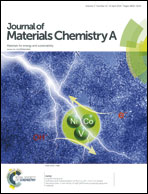A facile two-step approach to prepare superhydrophobic surfaces on copper substrates†
Abstract
Superhydrophobic surfaces were prepared on Cu substrates via a facile surface oxidation approach and subsequent chemical modification with low surface energy materials. In this paper, antiformin solution, as one of the most commonly used low cost disinfectants, is introduced for preparing bionic microstructures on copper surfaces for the first time. A short-time oxidation reaction soaking the Cu foil in antiformin liquid can result in the formation of a bean sprout-like structure. Moreover, regulating the morphology of the microstructure can be realized by changing the reaction duration and solution concentration under a wide range of experimental conditions. A possible growth mechanism is also proposed here. After being modified by stearic acid, all as-etched surfaces possess superhydrophobic properties, with a water contact angle (CA) larger than 150° and a sliding angle (SA) less than 10°. Simultaneously superoleophobic interfaces can be obtained after the etched surfaces are modified with heptadecafluorodecyltrimethoxysilane (HTMS). The resultant samples present good thermal stability at ambient temperatures below 150 °C. The same approach is also suitable for brass materials. This offers an effective and practical route for large scale industrial production of superhydrophobic materials.


 Please wait while we load your content...
Please wait while we load your content...